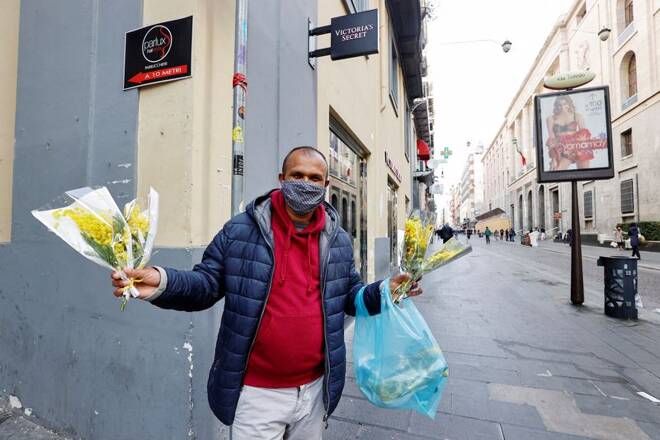Advertisement
Advertisement
Women’s Day in Italy hit by drought as flower supply dries up
By:
By Federico Maccioni MILAN (Reuters) - Italy's celebrations of International Women's Day on Wednesday risk being spoiled by a drought that has slashed production of the yellow mimosa flowers that are traditionally gifted for the occasion.
By Federico Maccioni
MILAN (Reuters) – Italy’s celebrations of International Women’s Day on Wednesday risk being spoiled by a drought that has slashed production of the yellow mimosa flowers that are traditionally gifted for the occasion.
The mimosa harvest has fallen by a third, with a drop in rainfall and higher temperatures forcing farmers to garner the twigs ahead of time, agricultural association Coldiretti said in a statement.
In addition, higher energy costs due to the war in Ukraine have made storing the scented flowers in refrigerators much more expensive, the group said.
Weeks of dry winter weather at the start of 2023 have raised concerns that Italy will face another full-blown emergency in the summer for the second year running.
The depleted supply of mimosas has pushed up prices, Coldiretti said, with large bunches selling for more than 20 euros ($21.20).
This in turn has led to a steep increase in thefts of the flowers from farms by less well-off people determined not to disappoint the women in their lives.
Mimosas, first introduced to Italy in the 19th century, were chosen as the country’s symbol of International Women’s Day in 1946, the year after the end of World War Two.
The choice was made by two members of an anti-fascist organization to embody women’s strength, energy and perseverance.
The first recorded celebration of the International Women’s Day was in 1911 in Austria, Denmark, Germany and Switzerland when over a million people rallied to support women’s rights.
($1 = 0.9432 euros)
(This story has been corrected to specify that the first celebration was in 1911 in Austria, Denmark, Germany and Switzerland, not in 1909 in the United States, in the last paragraph)
(Reporting by Federico Maccioni, editing by Gavin Jones and Sharon Singleton)
About the Author
Reuterscontributor
Reuters, the news and media division of Thomson Reuters, is the world’s largest international multimedia news provider reaching more than one billion people every day. Reuters provides trusted business, financial, national, and international news to professionals via Thomson Reuters desktops, the world's media organizations, and directly to consumers at Reuters.com and via Reuters TV. Learn more about Thomson Reuters products:
Did you find this article useful?
Latest news and analysis
Advertisement
